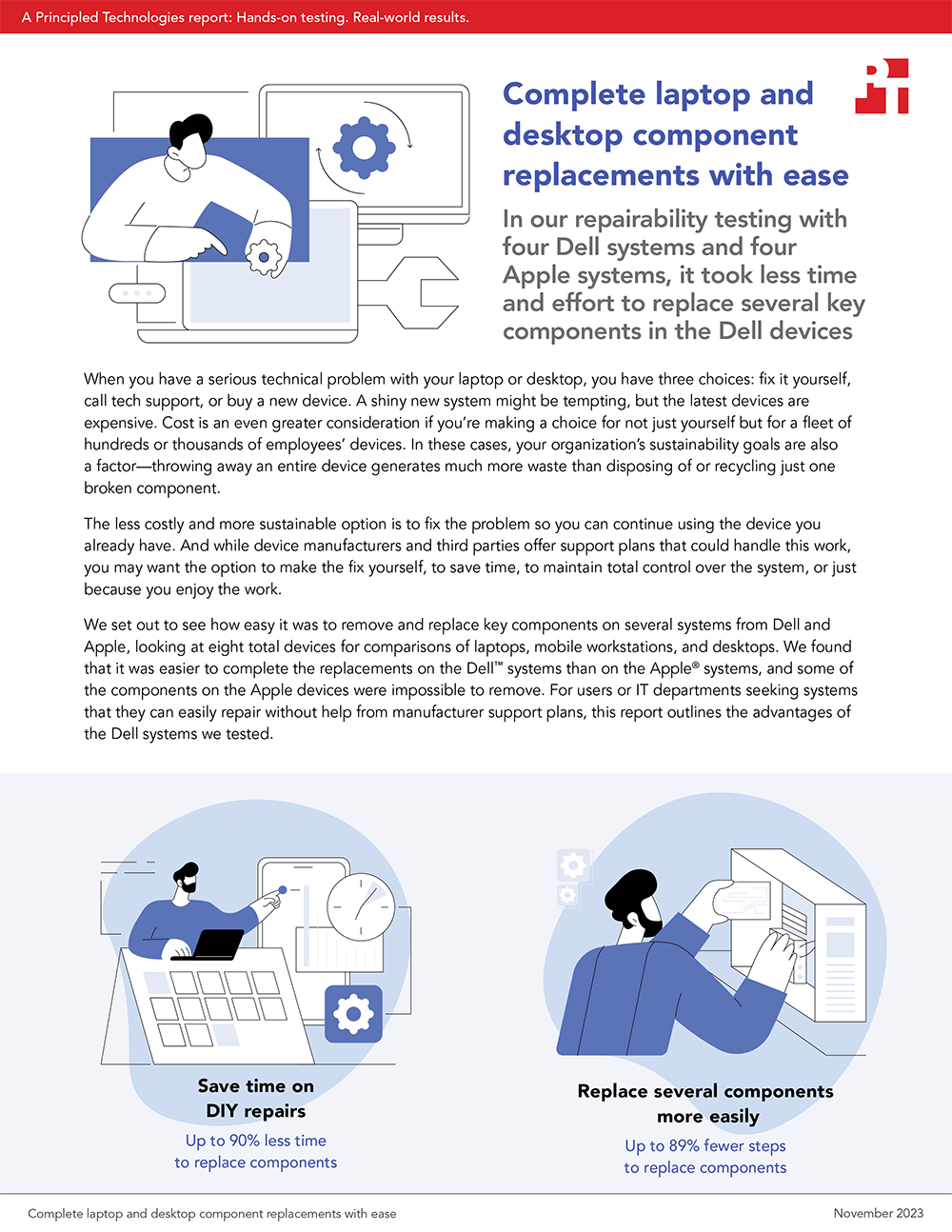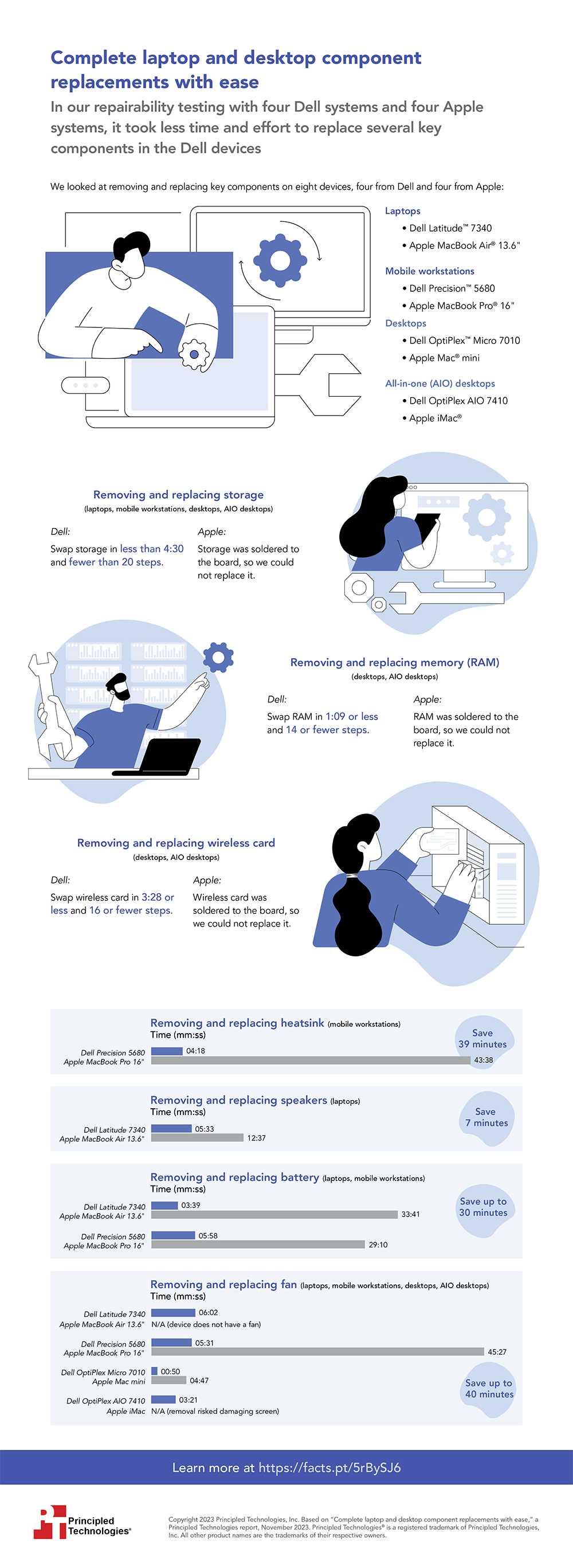
With any major purchase, smart buyers know that potential future repairs are part of the total cost of ownership. It’s true of houses, cars, appliances--and computers. For businesses of all sizes that depend on laptops and workstations for vital operations, system repair costs can add up beyond the price of replacement parts and technician labor—they can also include the inefficiencies and opportunity costs of worker downtime. Even with normally reliable hardware, it's inevitable that key components will eventually break in some systems. If businesses can quickly and easily repair broken gear on site instead of replacing it or calling in outside help, that repairability factor can prove to be an important purchasing consideration that pays off down the road.
We compared how easy it was to remove and replace key components on eight total devices from Dell and Apple—two laptops, two mobile workstations, two desktops, and two all-in-one desktops. We found that it took less time and fewer steps to complete the replacements on the Dell systems than on the Apple systems. In addition, some of the components on the Apple devices were impossible to remove. When we totaled the comparison results across all systems for the parts that we could replace on both the Dell and Apple systems, it took an average of 23 minutes 55 seconds—or 84.7 percent—less time and 34 fewer steps to finish repairs on the Dell systems. In addition, several of the Apple devices used a proprietary screw type that required a nonstandard screwdriver, which could potentially introduce further delays to the repair process.
For businesses that recognize the benefits of quick repairability for minimizing workflow interruptions, Dell laptops and workstations may be a great choice for boosting overall productivity.
For more in-depth information about our Dell and Apple hardware repairability study, check out the report and infographic below.
Principled Technologies is more than a name: Those two words power all we do. Our principles are our north star, determining the way we work with you, treat our staff, and run our business. And in every area, technologies drive our business, inspire us to innovate, and remind us that new approaches are always possible.







